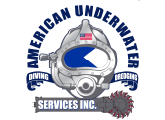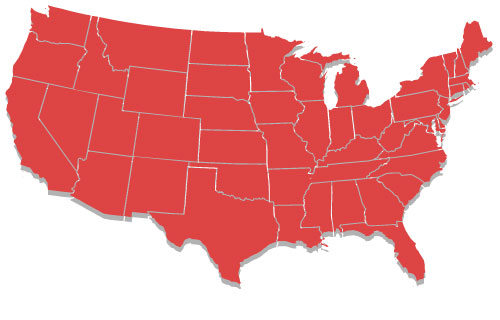Ponds and other water features in HOA residential communities help increase property values and the quality of life of homeowners and their families. However, keeping ponds looking (and smelling) clean and beautiful can be cost-prohibitive for many Homeowners’ Associations.
Maintaining a pond in an HOA community can often feel like an uphill battle, especially in areas where the ponds are several years or decades old. Ponds (like all artificial water features) have a life cycle that begins a slow death the minute they’re filled with water.
We will examine five species of invasive plant life that could negatively impact the look and life of an HOA pond. To the untrained eye, these plants and algae might look like “pretty aquatic plants.” Nobody bats an eye or starts asking questions until the pond becomes infested with weeds and suffers from smelly, unsightly algae outbreaks.
Hydrilla
Hydrilla plants are a nuisance species native to Asia. After a small batch was brought to Florida in the late 1950s, the infestation took hold and spread north and westward into almost every state in America.
Hydrilla is hardy (meaning it can survive in difficult conditions that would kill other plant life), fast-growing, and costly to remove. This is why early detection is the best course of treatment.
In addition to manually removing Hydrilla, grass carp and spot treatments with various herbicides can be added to the pond.
Duckweed
Duckweed is another nuisance plant that can proliferate and kill a pond in weeks or months. It resides on the water’s surface and resembles a thick mat of vegetative matter. Not only can it choke the life out of a pond by killing all of the fish, but it can also reproduce so fast that it will cover the entire surface of a pond in a matter of a few weeks.
Grass carp can be added to the water to help control the infestation, along with spot treatments with herbicides. You can also discourage duckweed from growing by installing an aerator system or fountain, which will increase water movement.
Curly-leaf Pondweed
This invasive species was introduced to the Great Lakes region in the early 1800s. Like most wildlife management practices of the day, it quickly got out of control, and the weed started to spread to other bodies of water like wildfire.
Curly-leaf pondweed specializes in thriving in low-lit, nutrient-rich waters. It can outcompete native species and lead to declining water quality and oxygen levels. This invasive species is so dangerous because it can hitch a ride on fishing equipment, boats, and animals and take hold in an entirely new water environment.
Grass carp and other herbivore fish species can help control pondweed. Herbicides and a comprehensive management plan to reduce nutrient levels in the pond will also help.
Giant Salvinia
Giant Salvinia is native to South America and has infested almost every state. It’s a free-floating plant that resides on the surface of the water and can quickly grow and outcompete native plant and animal life.
Its insatiable desire for oxygen can dramatically lower a pond’s oxygen levels and start a downward spiral. A fragment of a leaf getting stuck on an animal, human, or boat/fishing gear can quickly spread this plant to other ponds.
Our friend, the grass carp, is no match for this invasive plant. Early detection and a herbicide treatment plan are the best ways to control it.
Phragmites
Phragmites can often be mistaken for natural reeds. HOA managers realize the outbreak’s severity only when the infestation is out of control. If left untreated, phragmites can reach up to 16 feet in height and become extremely challenging (and costly) to remove from a pond.
This plant is hazardous because it uses a form of chemical warfare. Its extensive root system secretes a chemical into the soil, which prevents other plant life from growing.
Pond Dredging for HOA Communities
The best and most cost-effective way to maintain HOA ponds is to have them dredged at least once a year. Dredging removes the bottom nutrients, which allow invasive and nuisance plant life to thrive.
Regular dredging on your HOA ponds means you won’t have to spend thousands of dollars every year on potentially harmful herbicides and water treatment plans.
If you manage an HOA community and have any questions about your ponds, call us at (817) 377-8512. At American Underwater Services, we have over 20 years of experience helping HOAs dredge their ponds, which can help prevent outbreaks of nuisance plant life.
[author_box]
Hydrilla Plant
Hydrilla (Waterthyme or Hydrilla) is a genus of aquatic plants usually treated as containing just one species, Hydrilla verticillata. However, some botanists divide it into several species. It is native to the calm and warm waters of the Old World in Asia, Africa, and Australia. It has a sparse, scattered distribution in Australia, from the Northern Territory to Queensland and New South Wales.
Duckweed
Duckweed, or water lens, are flowering aquatic plants that float on or just beneath the surface of still or slow-moving bodies of fresh water and wetlands. Also known as “bayroot,” they arose from within the arum or aroid family (Araceae) and are often classified as the subfamily Lemnoideae within the Araceae. Other classifications, particularly those created before the end of the 20th century, place them as a separate family, Lemnaceae.
Curly-leaf Pondweed
Curly-leaf pondweed is a rhizomatous perennial herb producing a flattened, branching stem up to a meter long. The plant produces only submerged leaves that are linear or oblong in shape. These leaves are sessile, measuring 25–95 mm long and 5–12 mm wide. The leaves may be bright green, olive green, or (especially later in the season) brownish and have noticeably serrated margins, distinguishing them from other pondweeds. The leaves usually have wavy edges, but this is not always apparent, primarily when new growth occurs. Turions occur in leaf axils and at stem tips.
Giant Salvinia
Salvinia molesta, commonly known as giant salvinia or Kariba weed after it infested a large portion of Lake Kariba, is an aquatic fern native to south-eastern Brazil. It is a free-floating plant that does not attach to the soil but instead remains buoyant on the surface of a body of water. It is a complex of closely related floating ferns; they can be difficult to distinguish from each other. This water fern is often grown as an ornamental plant. Still, it has escaped and become a noxious pest in many regions worldwide. There are a few different growth forms for Salvinia molesta. The primary growth form is an invading form with small, flat leaves, and the tertiary or mat form with large, crowded, folded leaves. Under the best conditions, plants can form a two-foot-thick mat. These mats can put a halt to recreational activities on lakes and waterways. Salvinia molesta has been used to extract nutrients and pollutants from the water. When people dry out this plant, they use it as satisfactory mulch.
Phragmites
Phragmites is a genus of four species of large perennial grasses found in wetlands throughout temperate and tropical regions of the world.
Reed Plants
Reed is a common name for several tall, grass-like plants of wetlands.
Dredging
Dredging is the operation of removing material from one part of the water environment and relocating it to another. In all but a few situations, the excavation is undertaken by a specialist floating plant known as a dredger. Dredging is carried out in many different locations and for many different purposes, but the main objectives are usually to recover material that has some value or use or to create a greater depth of water.


